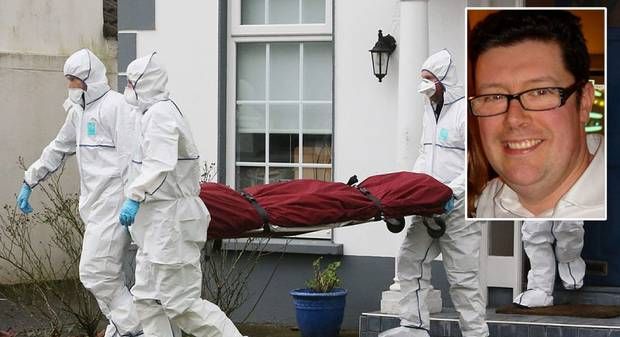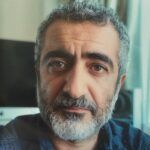
A disturbed man from Italy has admitted to killing his Irish landlord and eating part of his lung.
At an Irish murder trial, the jury heard that an Italian man admitted to killing his landlord in Castleknock, Dublin last year, and then proceeded to eat what he believed was the deceased’s heart. Saverio Bellante admitted to killing his friend, landlord and opponent, Thomas O’Gorman, after an argument over a alleged king-move, in a game of chess. Bellante informed the Irish Police (gardai) that he ate what he believed to be part of his opponent’s heart. Bellante was said to be suffering from mental disorder.
The deceased belonged to a religious group working for unity and brotherhood, whilst the accused is diagnosed with religious deliria and taking prescribed medications. Saverio Bellante, 36, from Beech Park Avenue, Castleknock, Dublin, is charged with murdering his landlord, Thomas O’Gorman, 39, between January 11 and January 12, 2014 at their residence.
Belfast Telegraph reports:
Last Monday at the Central Criminal Court Mr Bellante pleaded not guilty to murdering Mr O’Gorman.

BYPASS THE CENSORS
Sign up to get unfiltered news delivered straight to your inbox.
You can unsubscribe any time. By subscribing you agree to our Terms of Use
The jury of seven men and five women heard Mr Sean Guerin SC this morning make a number of admissions on behalf of his client, which they were told would make their time in the court very short.
Prosecution counsel Mr Patrick Gageby SC told the trial, which is expected to last two days, that if an issue of insanity arises the accused has to show he is insane, which Mr Gageby said is a “live issue in this case.”
The trial before Ms Justice Margaret Heneghan heard from Mr Gageby that Mr O’Gorman was killed sometime in the early hours of January 12 2014 and what alerted gardai to that fact was when Mr Bellante rang the gardai.
Mr Gageby said Mr O’Gorman was just shy of his fortieth birthday, he was a freelance journalist and worked part-time at The Iona institute which is associated with the Roman Catholic faith.
“Mr O’Gorman was also a member of an international movement called Focolare which is a very large international group, promoting the benevolent values of brotherhood and unity. It originated in World War Two in Italy,” said the barrister.
Mr Gageby said Mr Bellante was a native of Palermo in Italy and he was 35 years of age when he killed Mr O’Gorman. He had previously spent a year in Ireland between 2002 and 2003 and came from a respectful family.
“When Mr Bellante left Ireland, he went back to Sicily at that stage he was diagnosed with suffering from a mental disorder and diagnosed with having religious hysterical deliria. He was treated by a psychiatrist across there and put on anti-psychotic medication,” said the counsel.
The court heard Mr Bellante returned to Ireland again in 2011 and worked with a pharmaceutical company and had been taking his medication.
Mr Gageby said both men met through Focolare and in November 2013 Mr Bellante rented a room in Castleknock from Mr O’Gorman. They were acquaintances with “common interests.”
On the evening of January 11 2014 both men were playing a game of chess. The court heard the first unusual thing to happen was an unusual phone call made by Mr Bellante which suggested there was a disagreement. It was at 10.48pm to a mutual acquaintance of the two men, Mr Brendan Gallagher. Mr Gallagher didn’t pick up the message until 11.30pm that night.
The court heard the accused sister knew her brother had suffered a breakdown in the past and had a series of mental disorders.
The phonecall which was made to 999 by Mr Bellante at 1.50am in the morning said he killed Mr O’Gorman with a dumbbell and a knife.
“There was extensive bunt force trauma to the deceased and an enormous amount of blood everywhere. Unusually there was some form of a cutting open of his front chest. It would appear part of his lung was cut out and brought to the kitchen,” said Mr Gageby.
Defence counsel Mr Guerin then made nine admissions under Section 22 of the Criminal Justice Act to ease the burden of the prosecution including that at an unknown time between January 11 2014 or January 12 2014 Saverio Ballante killed Thomas O’Gorman.
A second admission was that Mr O’Gorman died a result of blunt force trauma to his head and stab wounds to his neck and chest.
Garda Patrick Traynor who arrived on the scene on the night in question was called to give evidence and he told the court he found the deceased Mr O’Gorman slumped across the carpet and what was unusual was whatever he was wearing on top was cut up and the area of his chest was open in middle with a large hole.
The court heard there was a dumbbell and a broken part of a sharp kitchen knife beside the body and a plate or bowl in the kitchen with lung tissue in it. Also there was a frying pan with “reddish material” in it.
When Mr Bellante was asked what happened he said they were playing chest and he had “moved the king” and Mr O’Gorman got angry.

Mr Gageby read the first interview conducted with the accused at Blanchardstown Garda Station on Sunday January 12 2014.
The court heard Mr Bellante thought he took Mr O’Gorman’s heart out of his chest with his hand but it was in fact his lung.
“I was thinking of eating his heart, I washed it and ate the bigger piece and left smaller one. I didn’t cook it, I left the smaller part and ate the bigger part, the smaller part wasn’t for me,” read Mr Gageby.
Chief State Pathologist Professor Marie Cassidy was also called to give evidence and she told the court she carried out a post mortem and Mr O’Gorman had been a victim of a violent assault with severe blunt force trauma to the left hand side of his head.
“There was a large gaping hole which was consistent with several blows from a large blunt object,” she said.
There was also evidence of a knife assault to his head, chest and neck. Prof Cassidy told the court she found the right lung was severed and removed and in a plastic carrier bag in the kitchen were the remains of the lung.
“There was a large wound to the front of the chest and a flap cut out of the rib cage through which the right lung was injured and part of it removed. Also seven stab wounds minor and shallow and not likely to be the cause of death,” she said.
Prof Cassidy said the cause of death was blunt force trauma to the head and stab wounds to the neck and chest.
The trial continues.


